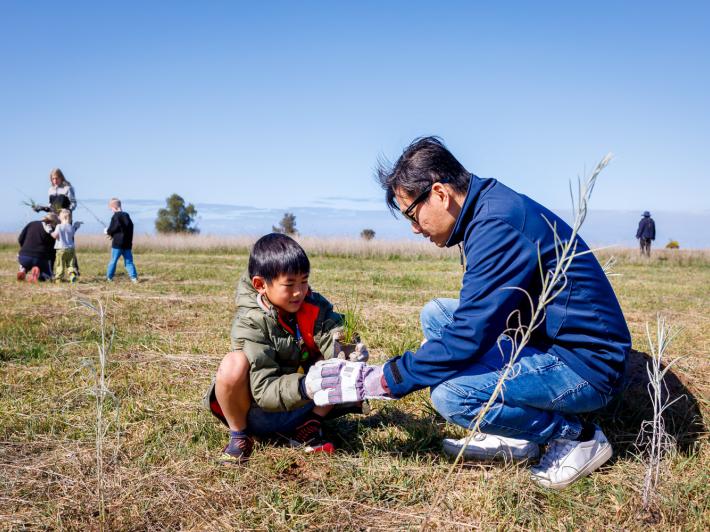
Hundreds discover the science behind sewage at Western Treatment Plant Open Day
More than 400 people attended the open day of Australia’s largest wastewater treatment plant on Sunday 18 August to learn about the science behind sewage.
The STEMtastic Community Day at Western Treatment Plant (WTP) was hosted by Melbourne Water as part of National Science Week (11-18 August)
“People learned about the science of turning wastewater into clean, recycled water, which is then used for farming and other non-drinking uses,” said Mel Cordy, Manager Water Literacy at Melbourne Water.
“Recycled Water is playing a significant role in dealing with the impacts of a growing population and climate change. It reduces pressure on our precious drinking water supplies and supports a range of industries, particularly agriculture.”
Visitors were taken on bus tours of lagoons containing millions of micro-organisms that clean Melbourne’s wastewater and learned how methane is captured and converted to energy to power the plant. A hands-on native grass planting activity allowed people to contribute to improving the grasslands on-site.

Kris Coventry, Head of WTP and a chemical engineer said National Science Week had been an opportunity to understand scientists’ vital role in managing water in Melbourne and beyond.
“Most people don’t realise we operate the largest water treatment plant in Australia, equivalent to the size of Phillip Island, and that more than half of Melbourne’s sewage ends up there every day,” said Dr Coventry.
Despite popular understanding, sewage refers to all wastewater discharged from showers, kitchens, toilets, and commercial premises.
Dr Coventry said the theme of National Science Week, Species Survival – More Than Just Sustainability, was also a chance to talk about how Melbourne Water scientists are working to enhance biodiversity, exemplified by the wetlands at WTP.
“The 550 million litres of water we process daily at the Western Treatment Plant has created a vast wetland that rivals Kakadu for birdwatching.
“The wetland is home to an array of birds and animals, many of them endangered, including the orange-bellied parrot,” he said.
Dr Coventry said scientists are essential in keeping Melbourne’s waterways healthy and preparing for the future.
“From providing clean drinking water, treating sewage, working within our community to reduce flood risk, and keeping all 25,000km of Melbourne’s waterways healthy, we manage all parts of the water cycle,” said Dr Coventry.
About National Science Week (11-18 August)
National Science Week aims to raise the profile and increase public understanding and public appreciation of science, innovation, mathematics, engineering and technology, and their role in maintaining and improving our society, economy and environment.
This year’s theme is Species Survival – More Than Just Sustainability.
About Western Treatment Plant
Managed by Melbourne Water, the WTP in Werribee is a world-class sewage treatment facility that treats over half of Melbourne’s sewage (around 550 million litres of sewage p.a.)
Roughly the size of Phillip Island, the plant is home to more than just sewage treatment facilities – doubling as a working farm and internationally-recognised bird habitat.
The WTP uses a low-energy process to treat sewage via a series of large ponds, called lagoons. As sewage slowly flows through the lagoons, bacteria gradually break down the organic material in the water. The water is then recycled for non-drinking purposes or safely discharged to Port Phillip Bay.



